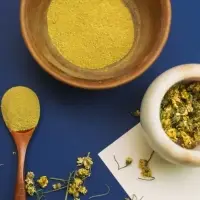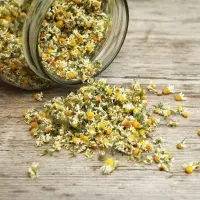
METHOD OF APPICATION: * Mastic compound application consist of two coats of. Primer ,Primer and followed by Mastic compound in recommended thickness, ranging from min. 12mm to 25mm in one or two layers to achieve desired thickness without any pin hole and crack. 1). Surface preparation and application of Primer: Refer application method of Primer. 2). After doing necessary surface preparation and application of primer coating, area to be installed with Mastic compound should be divided in to equal no. bays. To maintain even thickness required, place wooden or aluminum batten. Mastic compound is then broken in small pieces and put it in heating pan. While heating, keep material moving to avoid burning. It is heated until it comes in a uniform consistency and then applied on the surface and works it with wooden float, to achieve uniform thickness and smooth surface free from any pinholes. CHEMICAL RESISTANCE PROPERTIES: * Mastic compound has good resistance to weak, diluted acids, alkalis salts etc. It is not recommended to use against strong acids, oxidizing acid solvents, oil and fats STORAGE & PACKING: * Keep Mastic compound away from direct sunlight, heat solvents etc. Under this condition, its shelf life is unlimited. It is supplied in cake form and approx. wt. is 10 kgs. HEALTH & SAFETY: * Handle melted Mastic compound compound very carefully . Avoid contact with skin. It is advisable to wear protective wears at the time of use of Mastic compound and all other our products. This information, given in good faith, is based on results gained from experience and tests. However, all recommendations or suggestions are made without guarantee since the conditions of use are beyond our control.
Why to Buy Dried Hibiscus Flower Petals from Giva Agro: Hand Picked Quality(Premium Quality Sourced directly from our Farmers in India) No broken petals Purity: 99% clean Free from foreign matter Uses of Dried Hibiscus Flowers: Make a wonderful healthy Tea Direct consumption to lower body temperature Soaked in hair oil for Darker, stronger & healthier hair Reduce Hypertension and many more.
It is a perennial herbaceous plant, with elliptic, obtuse leaves. It grows as a vine or creeper, doing well in moist, neutral soil. The most striking feature about this plant is the color of its flowers, a vivid deep blue; solitary, with light yellow markings. They are about 4 cm (1.6 in) long by 3 cm (1.2 in) wide. Some varieties yield white flowers. The fruits are 5 - 7 cm (2.0 - 2.8 in) long, flat pods with six to ten seeds in each pod. They are edible when tender. It is grown as an ornamental plant and as a revegetation species (e.g., in coal mines in Australia), requiring little care when cultivated. As a legume, its roots form a symbiotic association with soil bacteria known as rhizobia, which transform atmospheric N2 into a plant-usable form (a process called nitrogen fixing), therefore, this plant is also used to improve soil quality through the decomposition of nitrogen rich plant material.
It is a perennial herbaceous plant, with elliptic, obtuse leaves. It grows as a vine or creeper, doing well in moist, neutral soil. The most striking feature about this plant is the color of its flowers, a vivid deep blue; solitary, with light yellow markings. They are about 4 cm (1.6 in) long by 3 cm (1.2 in) wide. Some varieties yield white flowers. The fruits are 5â??7 cm (2.0â??2.8 in) long, flat pods with six to ten seeds in each pod. They are edible when tender. It is grown as an ornamental plant and as a revegetation species (e.g., in coal mines in Australia), requiring little care when cultivated. As a legume, its roots form a symbiotic association with soil bacteria known as rhizobia, which transform atmospheric N2 into a plant-usable form (a process called nitrogen fixing), therefore, this plant is also used to improve soil quality through the decomposition of nitrogen rich plant material.
Centaurea cyanus, commonly known as cornflower or bachelor's button, is an annual flowering plant in the family Asteraceae, native to Europe. In the past it often grew as a weed in cornfields (in the broad sense of corn, referring to grains, such as wheat, barley, rye, or oats), hence its name. It is now endangered in its native habitat by agricultural intensification, particularly over-use of herbicides, destroying its habitat. It is also, however, through introduction as an ornamental plant in gardens and a seed contaminant in crop seeds, now naturalised in many other parts of the world, including North America and parts of Australia.
Centaurea cyanus, commonly known as cornflower or bachelor's button, is an annual flowering plant in the family Asteraceae, native to Europe. In the past it often grew as a weed in cornfields (in the broad sense of corn, referring to grains, such as wheat, barley, rye, or oats), hence its name. It is now endangered in its native habitat by agricultural intensification, particularly over-use of herbicides, destroying its habitat. It is also, however, through introduction as an ornamental plant in gardens and a seed contaminant in crop seeds, now naturalised in many other parts of the world, including North America and parts of Australia.
Centaurea cyanus, commonly known as cornflower or bachelor's button, is an annual flowering plant in the family Asteraceae, native to Europe. In the past it often grew as a weed in cornfields (in the broad sense of corn, referring to grains, such as wheat, barley, rye, or oats), hence its name. It is now endangered in its native habitat by agricultural intensification, particularly over-use of herbicides, destroying its habitat. It is also, however, through introduction as an ornamental plant in gardens and a seed contaminant in crop seeds, now naturalised in many other parts of the world, including North America and parts of Australia.
Centaurea cyanus, commonly known as cornflower or bachelor's button, is an annual flowering plant in the family Asteraceae, native to Europe. In the past it often grew as a weed in cornfields (in the broad sense of corn, referring to grains, such as wheat, barley, rye, or oats), hence its name. It is now endangered in its native habitat by agricultural intensification, particularly over-use of herbicides, destroying its habitat. It is also, however, through introduction as an ornamental plant in gardens and a seed contaminant in crop seeds, now naturalised in many other parts of the world, including North America and parts of Australia.
Tagetes is a genus of annual or perennial, mostly herbaceous plants in the sunflower family (Asteraceae). It was described as a genus by Carl Linnaeus in 1753. The genus is native to North and South America, but some species have become naturalized around the world. One species, T. minuta, is considered a noxious invasive plant in some areas.
Tagetes is a genus of annual or perennial, mostly herbaceous plants in the sunflower family (Asteraceae). It was described as a genus by Carl Linnaeus in 1753. The genus is native to North and South America, but some species have become naturalized around the world. One species, T. minuta, is considered a noxious invasive plant in some areas.
Matricaria chamomilla (synonym: Matricaria recutita), commonly known as chamomile (also spelled camomile), Italian camomilla, German chamomile, Hungarian chamomile (kamilla), wild chamomile or scented mayweed, is an annual plant of the composite family Asteraceae. M. chamomilla is the most popular source of the herbal product chamomile, although other species are also used as chamomile.
Matricaria chamomilla (synonym: Matricaria recutita), commonly known as chamomile (also spelled camomile), Italian camomilla, German chamomile, Hungarian chamomile (kamilla), wild chamomile or scented mayweed, is an annual plant of the composite family Asteraceae. M. chamomilla is the most popular source of the herbal product chamomile, although other species are also used as chamomile.
WE ARE INTO CULTIVATION AND EXPORT OF DRIED BLUE CORNFLOWER PETALS. The dried Blue Cornflowers are used to make medicine. People take cornflower petals tea to treat fever, constipation, water retention, and chest congestion. They also take it as a tonic, bitter, and liver and gallbladder stimulant. In foods, cornflower is used in herbal teas to provide color.
The demand for innovative horticulture tools and products is trending in the global landscape and agriculture and gardening trends are on the rise across the globe, leading to greater demand for better horticultural tools and products. The gap is bridged by go4WorldBusiness.com, which allows buyers to obtain quality horticulture products from trusted suppliers. Regardless of your needs as a client-whether you want fresh flowers, ornamental plants, or even medicinal plants, go4WorldBusiness.com is the one-stop shop for all your business needs.
Explore through a wide array of horticulture tools and products available on go4WorldBusiness.com:
These products meet international horticulture and landscaping requirements, thus providing quality and diversification.
Trading horticulture products on go4WorldBusiness.com is designed for efficiency:
go4WorldBusiness.com stands out for sourcing horticulture products due to:
Whether you’re a landscaping business, florist, or medicinal plant trader, go4WorldBusiness.com is the ultimate platform to expand your sourcing network and scale globally. Explore today's diverse horticulture product category, compare trusted supplier options, and make informed inquiries. Start your journey with go4WorldBusiness.com and grow your business with ease!












